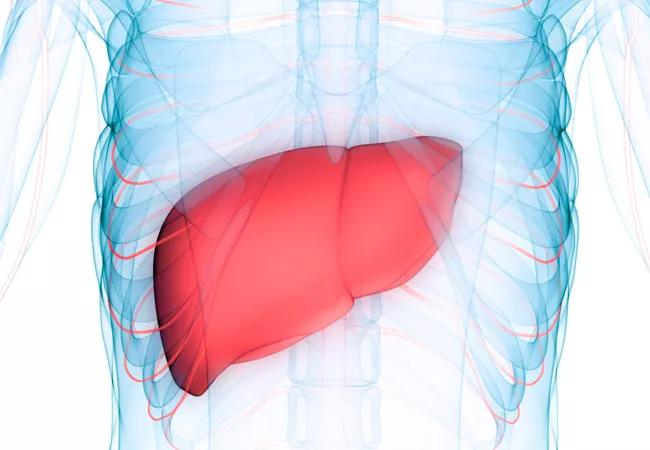Hepatologists and intensivists join forces

Before the August 2018 launch of a novel collaboration between hepatologists and intensivists at Cleveland Clinic, not all patients admitted to the ICU with acute or chronic liver failure received a comprehensive hepatology care plan.
Cleveland Clinic is a non-profit academic medical center. Advertising on our site helps support our mission. We do not endorse non-Cleveland Clinic products or services. Policy
Now these patients — including those referred for liver transplantation consideration or optimization — all receive a double specialist consult as part of more standardized, evidence-based, collaborative care in the Medical Intensive Liver Unit, or MILU, service.
“That’s the biggest change,” says Christina Lindenmeyer, MD, Department of Gastroenterology and Hepatology. “Everyone was seen by an intensive care unit specialist and now also by a transplant hepatologist.”
Preliminary data are promising. “Through this collaborative approach, our mortality rate is down almost 10 percent,” she says.
Dr. Lindenmeyer emphasized that these results are based on three months of data, but she believes outcomes will continue to improve “because we’re aware of these patient populations and actively seeking to care for them.”
The same metrics also show a decrease in ICU length of stay compared with similar patients from 2008 to 2014, says Aanchal Kapoor, MD, Department of Critical Care Medicine.
When designing the MILU, Drs. Kapoor and Lindenmeyer visited other institutions taking a similar innovative approach, “and we strongly felt we had the volume and expertise,” Dr. Kapoor says.
Priority number one was creating evidence-based protocols and guidelines to ensure patients receive the same standardized care. After 18 months of preparations, the MILU started seeing patients.
The MILU is distinctive in that “it solely focuses on the medical care of patients with acute and chronic liver disease,” Dr. Lindenmeyer says. Other institutions with similar collaborations combine medical and surgical specialists or emphasize surgical critical care.
Developing best practices in the care of liver patients is another aim. Dr. Kapoor and Dr. Lindenmeyer developed a checklist of metrics they will need to achieve Center of Excellence status for the Liver ICU, and are working to achieve them.
Liver ICU experts diagnose and treat people with acute and chronic liver failure, cirrhosis and related complications, hepatitis and potential candidates for liver transplantation. They also treat patients who present with acute-on-chronic liver failure or complications such as ascites, spontaneous bacterial peritonitis or hepatic encephalopathy. They manage cirrhotic patients who present in shock.
Part of their mission is to diagnose and treat patients sooner. Earlier intervention might prompt earlier transplant evaluations and discussions about goals of care, and may prompt faster initiation of advanced medical and surgical therapies.
“We are now able to provide expedited evaluations for liver transplants, faster than before this co-management unit was formed,” Dr. Lindenmeyer says. “Patients may now get listed for liver transplant sooner and undergo liver transplant earlier.”
“Our success stories include an acute liver failure patient who received a transplant within 48 hours,” Dr. Kapoor says.
The co-management model also allows specialists to see more patients. In the short time since the unit opened, the team has treated more than 150 patients, compared with 772 patients over the previous decade.
Cleveland Clinic is also one of the only centers nationwide performing organ transplantation involving donors infected with hepatitis C, driven by significant advances in treatment and cure rates. “This has enabled us to effectively expand our donor pool and expedite liver transplant for people who are really in need,” Dr. Lindenmeyer says.
“We also offer second and third opinions for liver transplant candidates who may have been turned down at other transplant centers,” says Dr. Lindenmeyer.
As appropriate, the Medical Intensive Liver Unit team will treat high-risk liver transplant patients with cardiac or lung disease. “We are available to referring physicians to provide evaluations for patients with comorbidities. We might be able to optimize these patients and bridge them to transplant,” Dr. Lindenmeyer says.
The new MILU also presents novel training and educational opportunities. Nurses, residents, fellows and visiting staff learn about the latest care of advanced liver disease through the service.
The new model also could spur innovative research beyond internal performance measures.
“We are maintaining a prospective registry of patients to be able to study outcomes over time,” Dr. Lindenmeyer says. “In the future we can create novel research protocols that could potentially revolutionize the care of critically ill patients with liver disease.”
To arrange a patient transfer, call 216.444.8302 or 800.553.5056.

Insights on guiding treatment decisions

Strong patient communication can help clinicians choose the best treatment option

Brief pearls for diagnosis and management of ascites and relevant conditions associated with decompensated cirrhosis

Hard-to-treat GI disorders benefit from multidisciplinary approach

How an IBD specialist pharmacist enhances patient care

Rate is lower with tunneled intravenous catheters

Cleveland Clinic’s ACO takes a team of teams approach

A multispecialty team was essential for this challenging case